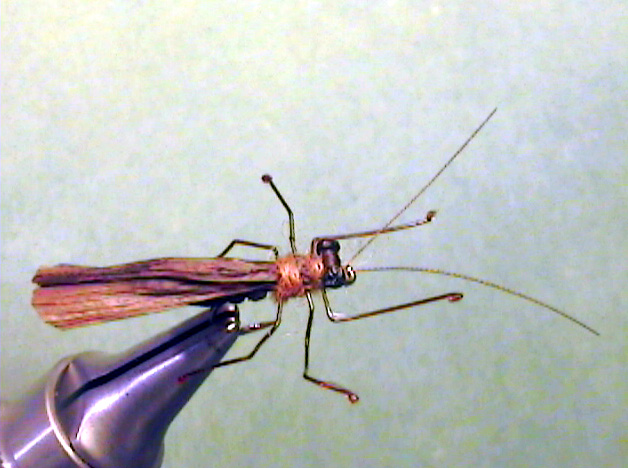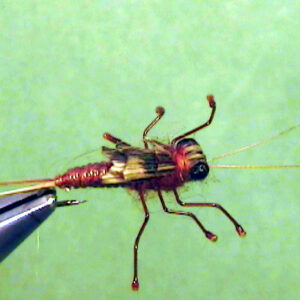Hook Size: 14
The Perfect Fly Little Brown Stonefly adult is the fully grown stage of life of the stonefly. It emerges from the nymph on the banks of the stream on rocks that protrude out of the water. The females return to the water late in the day to deposit their eggs and that is when trout dine on the adults. Fish the fly in the early afternoons until late in the day near the same water they emerged from. Floatant should be used on the dry fly.
The Little Brown Adult Stoneflies are fairly obvious along the banks of the
stream after a hatch but just because you find them does not necessarily mean
they will be depositing their eggs that particular day. As I have previously said,
the adults can live a relatively long time after they hatch prior to depositing their
eggs.
Some of the species do deposit their eggs in the daytime and others deposit
them in the evenings. It would be impossible for you to determine when they
would deposit their eggs just by looking at an adult. Like I said, it is not easy to
identify them even down to the family by observing them on the stream.
You should fish imitations of the adults only when you observe the stoneflies
depositing their eggs.
Most of the time there is not enough activity for the trout to become selective on
the female adults so the dry fly fishing for these two families of stoneflies is hit or
miss, mostly miss. Often, even when you observe the egg laying activity, the
water is cold and the trout are too inactive to take the flies from the surface of
the water. On the other hand, there may be times during the day at a particular
location on a given stream that the egg laying activity deserves attention. It is a
good idea to be prepared by having a few imitations of the adult Little Brown
Stonefly along with you.
Presentation:
Although the egg layers skip around depositing their eggs, just allowing your fly
to drift along should work especially if the water is fairly fast and rough. I just
wouldn’t expect a lot of results from fishing this stage of the hatch. On any warm,
late winter or early spring afternoon, at the right place on the right stream, you
just may prove that I shouldn’t have downplayed the egg laying activity quite as
much as I probably have.

